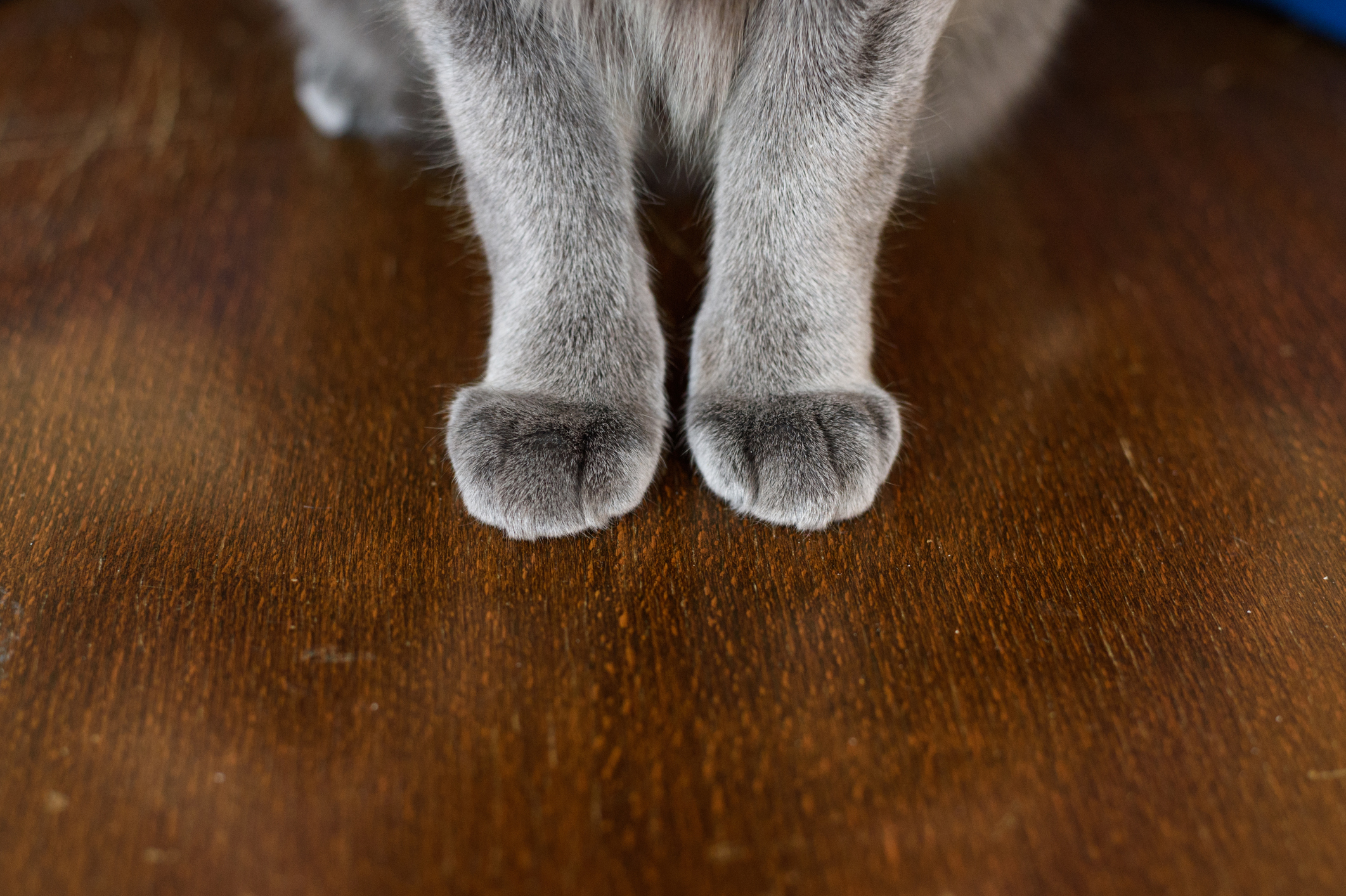
These Changes to Your Cat's Paw Might Indicate a Serious Infection
Cats don’t get the luxury of wearing shoes like humans do—nor would they want to! Our feline friends use their nimble paws and claws to walk, run, climb and leap around the home and find their delicate footing. Unfortunately, their paws’ exposure to indoor and outdoor hazards leaves them vulnerable to wounds and infections.
Two tell-tale signs that something is wrong with your cat’s paw are that they won’t leave it alone—biting and licking the paw without relief—and that they won’t walk on it, causing them to limp or have uneasy footing. If you notice these signs, take a peek at your kitty’s paws. A few physical changes might help you understand what’s causing the irritation.
Paw infections aren’t hard to spot

Most injuries to a cat’s paw will produce a few common symptoms as the body works to heal the damaged tissue. These symptoms may include:
- Swelling: Swelling may occur across the entire paw or on a single toe or section of the foot. A swollen paw will look noticeable bigger than the other.
- Redness: Swollen paws may also appear red. Redness may be caused by inflammation as the body’s immune system works to seal a wound or fight infection.
- Warm to the touch: Heat on the paw is also a side effect of inflammation. The paw may be warmer to the touch than the rest of your cat’s body.
- Pain: Your cat may limp, hold the paw up, overgroom the paw or refuse to let you touch the paw. These are all signs of pain.
All of these signs indicate a problem with the paw. Unfortunately, these problems could range from a minor scrape to a severe puncture wound. But how do you know if the paw is infected? It’s very difficult to know what’s going on beneath the skin by just looking at a wound. Fortunately, a few other paw changes might indicate that your cat’s paw is infected.
- Lumps or bumps: Paw infections may cause noticeable lumps on a part of the paw. These are typically abscesses, or pockets of pus under the skin.
- Discharge: Yellow, green, white or bloody discharge may be present on your cat’s paw—particularly if an abscess has ruptured. Pus is caused by a buildup of white blood cells that responded to the infection.
- Odd odor: An infected paw might produce a strange or pungent odor.
Paw infections are dangerous because they could spread to other parts of the body and make your cat very ill. Infections may cause your cat to have a fever that persists for many days and may even climb to dangerous temperatures. Additionally, a cat with an infection may show other signs of illness, including inappetence and behavioral changes.
Paw infections are typically caused by bacteria or fungi overgrowing on the skin or becoming trapped in the skin because of a wound. Most often, they stem from:
- Bites or scratches: If a cat or another animal bites or scratches your cat’s paw, it might result in a wound filled with bacteria from the animal’s mouth or claws.
- Overgrown toenails: If your cat is not shedding their nails using a scratching post and the nails are allowed to grow long, they can curve around and puncture the paw pad, potentially leading to an infection.
- Puncture wounds: If the paw pad is punctured by another foreign object, such as glass, the wound has the potential to become infected if not addressed immediately.
What to do when you notice paw infection symptoms

If you notice signs of a possible paw infection in your cat, you’ll want to take action as soon as possible. Follow these steps:
- Examine the foot, looking for a potential cause, such as an overgrown toenail or a foreign object. If you can safely remove it without causing your cat pain, do so.
- Wash the paw with warm water and mild soap to try and clear the wound of bacteria.
- If discharge appears to be coming from an abscess, don’t attempt to puncture or drain it yourself. You could cause your cat serious pain or distress!
- Call your veterinarian and have your cat examined as soon as possible. During this exam, your vet might run a few tests to determine the cause of the paw problem. If the paw is indeed infected, your pet will likely need to take antibiotics. If an abscess has formed, your vet may need to drain it to allow the paw to heal.
- Once home, follow your vet’s instructions for care. This may include administering medications, as well as checking and changing bandages if your cat has an open wound.
It will be very important to prevent your cat from biting or licking their paw, since this can introduce new bacteria into the wound and cause a secondary infection. An Elizabethan collar or bandages may be necessary until the paw is substantially healed.
As your cat’s wound heals, they may have a difficult time walking on that paw. Accommodate your cat’s limited mobility by moving food bowls and litter boxes to easily accessible locations within your home.
With proper care and time, your cat’s infection should clear up, the wound should heal, and your kitty will be back to normal once again!


